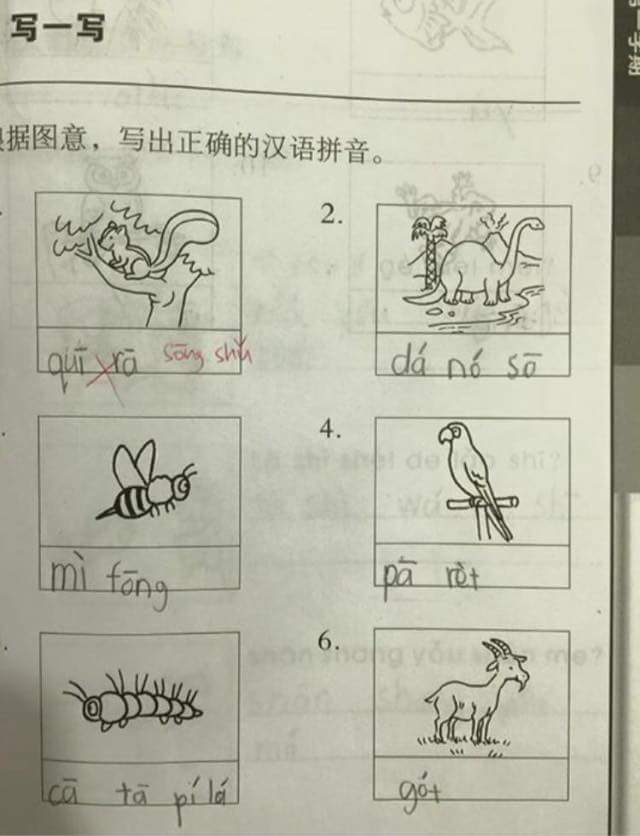Archive for Borrowing
June 19, 2016 @ 10:41 am· Filed by Victor Mair under Borrowing, Neologisms
Japanese is full of loanwords from English, a phenomenon we have often discussed on Language Log, e.g.:
"Too many English loanwords in Japanese?" (7/12/13)
Not only does Japanese like to borrow words from English, it is fond of borrowing parts of words and combining them with Japanese morphemes to make hybrid coinages. It's not always easy — even for a native speaker of Japanese — to figure out some of these inventions, because you only have part of a katakanized English word fused with part of a Japanese word.
Read the rest of this entry »
Permalink
May 14, 2016 @ 10:08 am· Filed by Victor Mair under Borrowing, Code switching, Creoles and pidgins
We've mentioned that special brand of Singaporean English on Language Log from time to time, most recently just a few days ago:
"New Singaporean and Hong Kong terms in the OED" (5/12/16)
So what is it, really?
Read the rest of this entry »
Permalink
May 12, 2016 @ 7:12 pm· Filed by Victor Mair under Borrowing, Lexicon and lexicography
"The Oxford English Dictionary (OED) added 19 Singaporean terms and 13 Hong Kong terms in its latest update." So reports BBC News in "Singapore terms join Oxford English Dictionary" (5/12/16)
Here are the lists:
Read the rest of this entry »
Permalink
May 4, 2016 @ 10:33 am· Filed by Victor Mair under Borrowing, Transcription, Translation
I suppose it's been around for at least 5-10 years, but I just encountered the expression "tài shuǎng le 太爽了" in the English informal sense of "cool!". With 409,000 ghits, it seems to be fairly widespread, though not all of those ghits are to the informal sense of the English word (see the numbered items below for a variety of other meanings for this expression).
Read the rest of this entry »
Permalink
April 14, 2016 @ 9:33 pm· Filed by Victor Mair under Borrowing, Code switching, Signs
Michael Rank writes:
I'm intrigued by a sign in the window of a Vietnamese restaurant in Shoreditch, ultra-hipster area of east London which also has lots of inexpensive, unpretentious (mainly) Vietnamese restaurants. I don't know any Vietnamese, I assume Can Tuyen (please forgive lack of diacritics) means "wanted" or "job available" or similar and that there are perfectly good words for waiter/waitress in Vietnamese, so why are these two words in English? It's a bit like another (Chinese) London restaurant sign that I mentioned in this post:
"No word for 'serve' in Chinese? " (3/1/15)

Read the rest of this entry »
Permalink
April 9, 2016 @ 2:59 pm· Filed by Victor Mair under Borrowing, Etymology, Lost in translation
Posted on imgur:

Read the rest of this entry »
Permalink
March 28, 2016 @ 8:25 pm· Filed by Victor Mair under Borrowing, Language and culture, Language and technology, Philology, Phonetics and phonology
Previous posts in the series:
As mentioned before, the following post is not about a sword or other type of weapon per se, but in terms of its ancient Eurasian outlook, it arguably belongs in the series:
Today's post is also not about a sword, but it is about a weapon, namely an arrow.
Read the rest of this entry »
Permalink
March 26, 2016 @ 4:01 pm· Filed by Victor Mair under Abbreviation, Acronyms, Borrowing
[This is a guest post by Nathan Hopson]
I live in the central Japanese industrial hub of Nagoya, the city that Toyota (re)built. Despite the greater Nagoya metro area's twelve million inhabitants and a GDP trailing Switzerland for #20 on the world country rankings, the locals in particular refer to the city as inaka, the boonies. Nagoya is a city almost universally described as, "not much to visit, but a nice place to live."
Read the rest of this entry »
Permalink
March 24, 2016 @ 6:39 pm· Filed by Victor Mair under Borrowing, Transcription
Previous posts in the series:
As mentioned before, the following post is not about a sword or other type of weapon per se, but in terms of its ancient Eurasian outlook, it arguably belongs in the series:
Read the rest of this entry »
Permalink
March 16, 2016 @ 11:30 am· Filed by Victor Mair under Borrowing, Phonetics and phonology, Transcription, Writing systems
Previous posts in the series:
"Of precious swords and Old Sinitic reconstructions " (3/8/16)
"Of precious swords and Old Sinitic reconstructions, part 2 " (3/12/16)
The following post is not about a sword or other type of weapon per se, but in terms of its ancient Eurasian outlook, it arguably belongs in the series:
"Of felt hats, feathers, macaroni, and weasels " (3/13/16)
Read the rest of this entry »
Permalink
March 12, 2016 @ 7:20 pm· Filed by Victor Mair under Borrowing, Phonetics and phonology, Transcription, Writing systems
Part 1 in this series was posted here on 3/8/16 and dealt with a sword called Mòyé 鏌鋣 / 莫邪. The post was followed by a vigorous discussion that revealed the existence of a large number of words for "sword" in other languages that sound like the reconstructed Old Sinitic form (roughly *mˤak-ja or /makzæ/), stretching westward across Eurasia. Surprisingly, such words were found prominently in Slavic and Finno-Ugrian languages, but these were determined to be of Germanic origin. There were also parallels in Caucasian languages. All of this strongly suggested the possibility that further research along these lines would be rewarding.
Read the rest of this entry »
Permalink
March 8, 2016 @ 8:33 am· Filed by Victor Mair under Borrowing, Philology, Phonetics and phonology, Transcription
In "The hand of god" (3/4/16), I cited a Chinese text in which the term Mòyé 鏌鋣 (the name of a famous sword in antiquity) came up. The translation I provided rendered that term as "Excalibur", which caught the attention of a couple of commenters who wondered how one could get from Mòyé 鏌鋣 to "Excalibur", when all that Google Translate could offer is "ROBOT 鋣".
Read the rest of this entry »
Permalink
March 7, 2016 @ 10:51 am· Filed by Victor Mair under Borrowing, Language and education, Spelling, Translatese, Writing
A correspondent from Singapore saw the following photograph in his Facebook feed:

Read the rest of this entry »
Permalink


